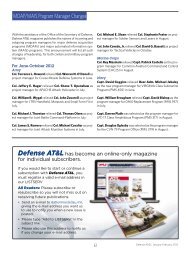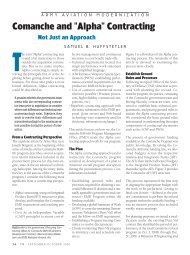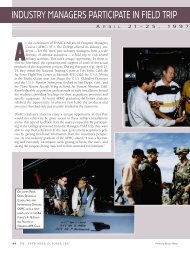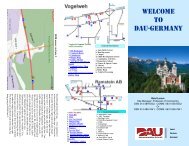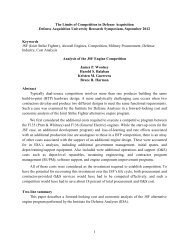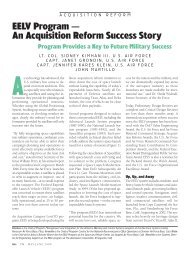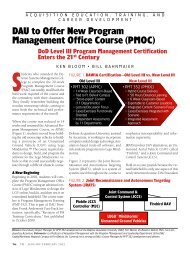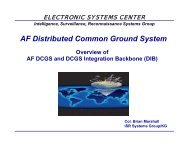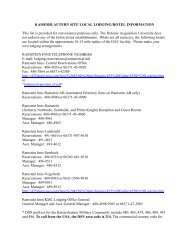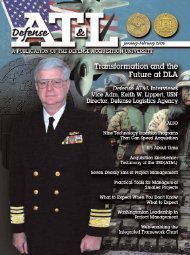Defense ARJ - Defense Acquisition University
Defense ARJ - Defense Acquisition University
Defense ARJ - Defense Acquisition University
Create successful ePaper yourself
Turn your PDF publications into a flip-book with our unique Google optimized e-Paper software.
<strong>Defense</strong> <strong>Acquisition</strong> Review Journal<br />
tAble 8. staBility of systeMs reQuireMents and proJeCt<br />
perforManCe<br />
Average number of successful outcomes<br />
Mid-development<br />
requirements change?<br />
Frequency of systems<br />
requirements change?<br />
late engineering changes (bottom, Table 7). For those that had none or only one or<br />
two systems requirements changes, six of nine met their cost goals, and three of nine<br />
avoided (even minor) late engineering changes. Weaker but similar negative differences<br />
on other outcomes (not shown) are found among those projects that experienced<br />
more requirements changes.<br />
One can see the overall effects of the frequency and timing of systems requirements<br />
changes by looking at how many successful outcomes these projects had on<br />
average. The respondents were asked in what stage of development the requirements<br />
had changed, and it was found that the negative impact on the average rates of success<br />
was greatest when changes had occurred in mid-development (typically after<br />
the Critical Design Review). As shown in Table 8, the four projects that had systems<br />
requirement changes in mid-development had only an average of 2.0 positive performance<br />
outcomes, compared to 4.11 average positive outcomes of those that did not<br />
change in mid-development.<br />
The impact is even greater when one looks at the frequency of requirements<br />
changes and the average number of successful outcomes. The four projects said to<br />
have seen systems requirements changes several or many times during development<br />
averaged only 1.50 successful outcomes, compared to 4.33 successes among those<br />
projects that had no or only one or two systems requirements changes.<br />
turnoVer in key user Personnel<br />
The U.S. Army Training and Doctrine Command (TRADOC) is responsible for<br />
determining the requirements that Army materiel must meet in order to have utility<br />
on the battlefield. A senior TRADOC staff member (typically a colonel) serves as<br />
the alter ego of the Project Manager in interpreting these requirements as they are<br />
translated into system technical requirements during the acquisition process. This key<br />
individual may also play a critical role in preserving the planned funding for the system<br />
development by persuading more senior TRADOC leaders to strongly reaffirm<br />
the need for the system when budget cuts are threatened or problems are encountered<br />
in the system development that increase cost or stretch schedule. The frequency and<br />
timing of turnover in key TRADOC personnel were examined to determine influence<br />
on project outcomes.<br />
124<br />
Changes<br />
occurred<br />
No changes Signif. at<br />
2.00 (4) 4.11 (9) .005<br />
Several or<br />
Many times<br />
None, or One<br />
or two times<br />
Signif. at<br />
1.50 (4) 4.33 (9) .006



